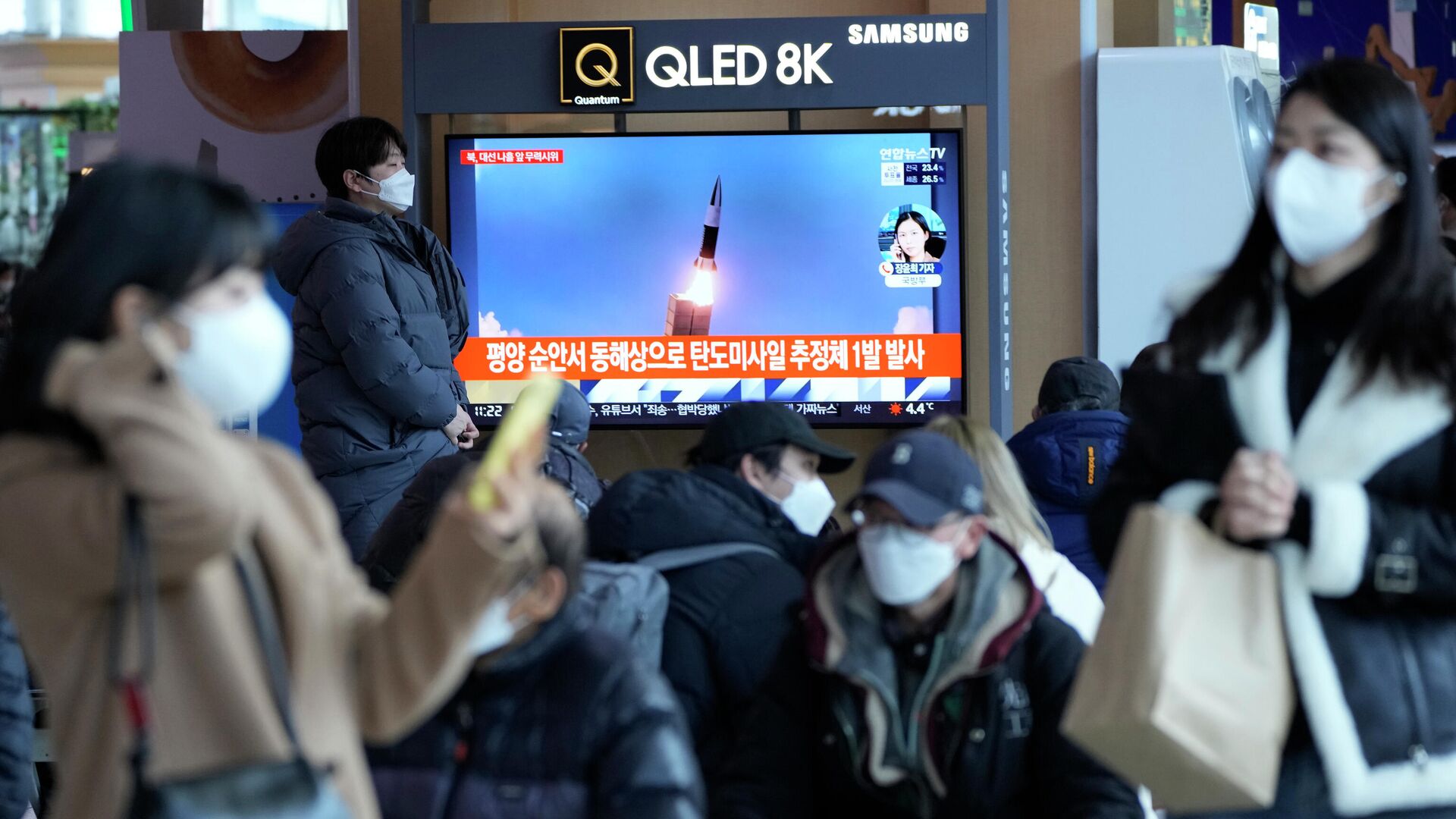https://sputnikglobe.com/20220311/pentagon-claims-north-korea-tested-elements-of-its-new-icbm-1093770595.html
Pentagon Claims North Korea Tested Elements of Its New ICBM
Pentagon Claims North Korea Tested Elements of Its New ICBM
Sputnik International
Last Saturday, North Korea launched a short-range missile from the Sunan area near the capital Pyongyang, in what was the DPRK's ninth missile test since the... 11.03.2022, Sputnik International
2022-03-11T10:08+0000
2022-03-11T10:08+0000
2023-09-18T13:36+0000
us
icbm
test
sanctions
north korea
https://cdn1.img.sputnikglobe.com/img/07e6/03/0b/1093765817_0:96:3072:1824_1920x0_80_0_0_9cd366dc59c9f97d096b5d806a0f9555.jpg
US Department of Defence spokesman John Kirby has claimed that North Korea's two recent missile tests involved elements of a new intercontinental ballistic missile (ICBM) system "that the DPRK is developing".According to Kirby, the new ICBM was "originally unveiled during the Korean Workers Party parade on 10 October 2020"."The United States strongly condemns these launches, which are a brazen violation of multiple United Nations Security Council resolutions, needlessly raise tensions, and risk destabilising the security situation in the region", Kirby stressed.The remarks follow Pyongyang saying that its launches of short-range missiles on 26 February and 4 March were part a North Korean reconnaissance satellite project.The South Korean Joint Chiefs of Staff (JCS), in turn, argued that during the 4 March launch, the DPRK test-fired a suspected ballistic missile from around the Sunan area near Pyongyang toward the Sea of Japan. According to JCS, the missile flew about 270 kilometres (168 miles) reaching a maximum altitude of 560 kilometres (347 miles) and falling outside of Japan's exclusive economic zone.This came after North Korea confirmed in late January that it had launched a Hwasong-12 ICBM, the longest-range missile tested by Pyongyang since 2017.North Korea, which is currently under strict international sanctions over its missile and nuclear weapons programmes, put a moratorium on testing long-range ballistic missiles and nuclear tests after talks between the DPRK's leader Kim Jong-un and then-US President Donald Trump in late June 2019. A year later, though, Kim announced he was no longer bound by the promise.Let's stay in touch no matter what! Follow our Telegram channel to get all the latest news: https://t.me/sputniknewsus
north korea
Sputnik International
feedback@sputniknews.com
+74956456601
MIA „Rossiya Segodnya“
2022
Oleg Burunov
https://cdn1.img.sputnikglobe.com/img/07e4/09/0b/1080424846_0:0:2048:2048_100x100_80_0_0_3d7b461f8a98586fa3fe739930816aea.jpg
Oleg Burunov
https://cdn1.img.sputnikglobe.com/img/07e4/09/0b/1080424846_0:0:2048:2048_100x100_80_0_0_3d7b461f8a98586fa3fe739930816aea.jpg
News
en_EN
Sputnik International
feedback@sputniknews.com
+74956456601
MIA „Rossiya Segodnya“
Sputnik International
feedback@sputniknews.com
+74956456601
MIA „Rossiya Segodnya“
Oleg Burunov
https://cdn1.img.sputnikglobe.com/img/07e4/09/0b/1080424846_0:0:2048:2048_100x100_80_0_0_3d7b461f8a98586fa3fe739930816aea.jpg
us, icbm, test, sanctions, north korea
us, icbm, test, sanctions, north korea
Pentagon Claims North Korea Tested Elements of Its New ICBM
10:08 GMT 11.03.2022 (Updated: 13:36 GMT 18.09.2023) Last Saturday, North Korea launched a short-range missile from the Sunan area near the capital Pyongyang, in what was the DPRK's ninth missile test since the beginning of this year.
US Department of Defence spokesman John Kirby has claimed that North Korea's two recent missile tests involved elements of a new intercontinental ballistic missile (ICBM) system "that the DPRK is developing".
According to Kirby, the new ICBM was "originally unveiled during the Korean Workers Party parade on 10 October 2020".
The Pentagon spokesman argued that the purpose of the missile tests, "which did not demonstrate ICBM range, was likely to evaluate this new system before conducting a test at full range in the future, potentially disguised as a space launch".
"The United States strongly condemns these launches, which are a brazen violation of multiple United Nations Security Council resolutions, needlessly raise tensions, and risk destabilising the security situation in the region", Kirby stressed.
He added that Washington had decided to publicly reveal the information related to the launches and share it with its allies "because we [the US] prioritise the reduction of strategic risk and believe firmly that the international community must speak in a united voice to oppose further development of such weapons by the DPRK".
The remarks follow Pyongyang saying that its launches of short-range missiles on 26 February and 4 March were part a North Korean reconnaissance satellite project.
The South Korean Joint Chiefs of Staff (JCS), in turn, argued that during the 4 March launch, the DPRK test-fired a suspected ballistic missile from around the Sunan area near Pyongyang toward the Sea of Japan. According to JCS, the missile flew about 270 kilometres (168 miles) reaching a maximum altitude of 560 kilometres (347 miles) and falling outside of Japan's exclusive economic zone.
This came after North Korea confirmed in late January that it had launched a Hwasong-12 ICBM, the longest-range missile tested by Pyongyang since 2017.
North Korea, which is currently under strict international sanctions over its missile and nuclear weapons programmes, put a moratorium on testing long-range ballistic missiles and nuclear tests after talks between the DPRK's leader Kim Jong-un and then-US President Donald Trump in late June 2019. A year later, though, Kim announced he was no longer bound by the promise.
Let's stay in touch no matter what! Follow our Telegram channel to get all the latest news: https://t.me/sputniknewsus 

